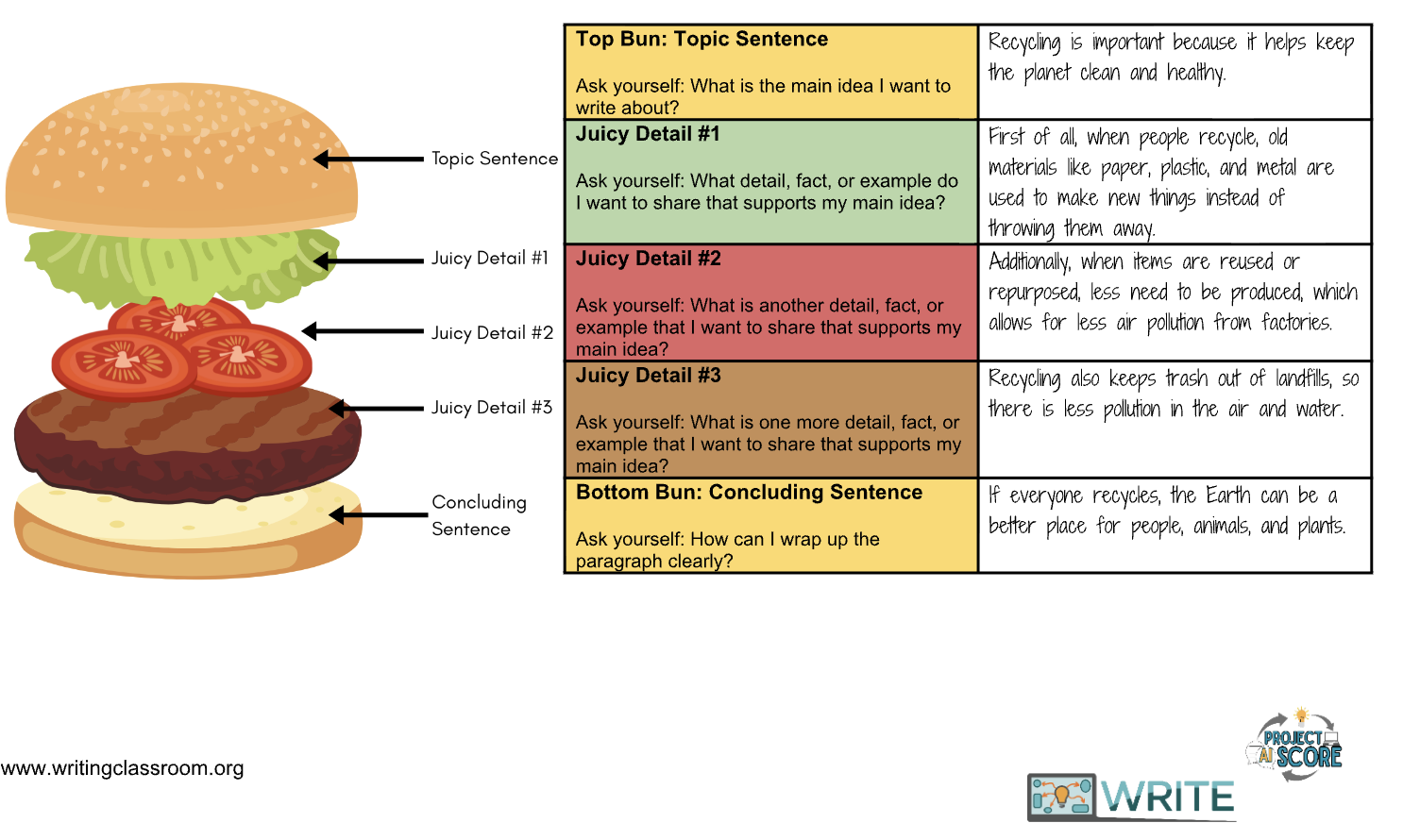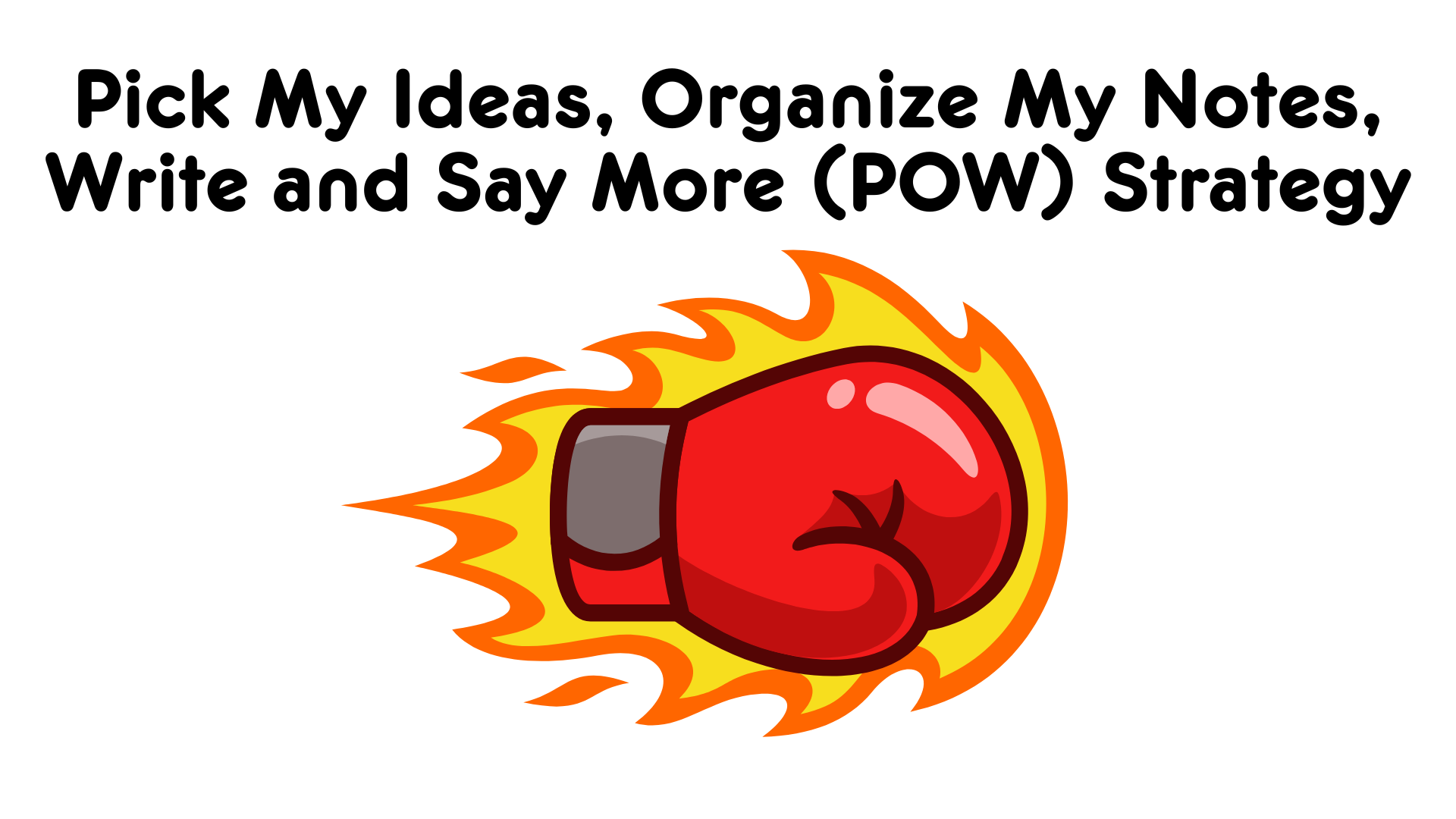Hamburger Strategy
Strategy Parameters
- Genre: All
- Grade level: Grades 2-6
- Writing Stage: planning, drafting
At-A-Glance
The Hamburger paragraph strategy provides students with a concrete, visual metaphor for planning and evaluating the structure and content depth of their written paragraphs.

Overview
This pedagogical tool maps the essential components of a paragraph—topic sentence, supporting details, and conclusion—onto the layers of a hamburger, promoting a clear understanding of structural requirements. The strategy helps students assess whether their paragraph’s focus is appropriately scoped, identify areas needing further development, and ensure a strong connection between all points. Its familiar and visual nature acts as an effective scaffold, supporting memory and fostering greater writing independence by breaking the task into manageable, organized parts.
Purpose and Benefits
This strategy helps students:
-
Gain a visual, memorable structure to guide the initial planning and drafting of a paragraph.
-
More easily evaluate the scope of their topic and identify whether their ideas are too broad or too narrow.
-
Identify underdeveloped arguments or insufficient support by checking for enough “juicy” details.
-
Improve the logical flow and connection between the main idea and all supporting points within the text.
-
Develop stronger organizational skills for transforming initial thoughts into a complete, structured written piece.
Why It's Effective
-
The concrete hamburger metaphor is highly accessible and familiar, reducing cognitive load associated with abstract structural rules.
-
It provides a consistent, clear scaffold that can be applied independently across various writing tasks, boosting student confidence.
-
The visual mapping encourages self-reflection and metacognition by asking students to actively assess the quality and completeness of their content.
-
It simplifies complex paragraph requirements into manageable, distinct steps, facilitating the organization of thoughts before formal writing begins.
-
It makes expectations for strong paragraph writing more transparent by equating each component to a specific, necessary part of the visual model.
Downloads




